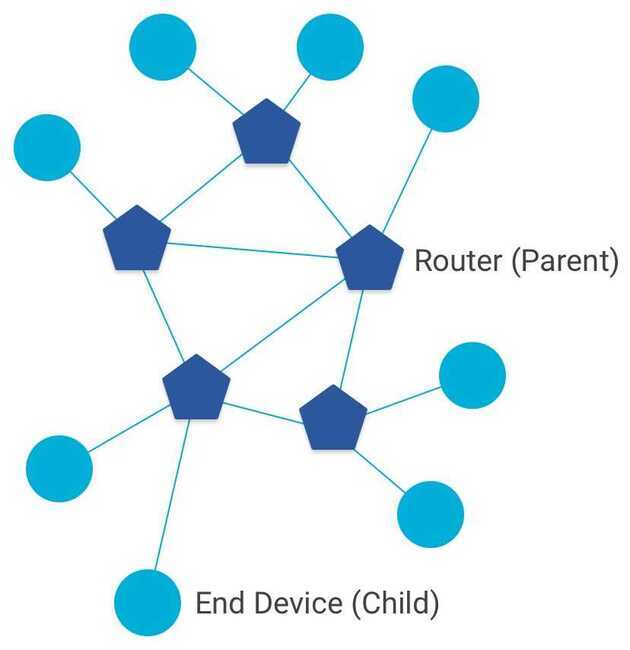OpenThread
Thread
Thread is designed to address the unique interoperability, security, power, and architecture challenges of the IoT.
- Thread is a low-power wireless mesh networking protocol, based on the universally-supported Internet Protocol (IP), and built using open and proven standards.
- Thread enables device-to-device and device-to-cloud communicationsand reliably connects hundreds (or thousands) of products and includes mandatory security features.
- Thread networks have no single point of failure, can self-heal and reconfigure when a device is added or removed, and are simple to setup and use.
- Thread is based on the broadly supported IEEE 802.15.4 radio standard, which is designed from the ground up for extremely low power consumption and low latency.
Thread is an IPv6-based networking protocol designed for low-power Internet of Things devices in an IEEE 802.15.4-2006 wireless mesh network, commonly called a Wireless Personal Area Network (WPAN). Thread is independent of other 802.15.4 mesh networking protocols, such a ZigBee, Z-Wave, and Bluetooth LE.
Thread's primary features include:
- Simplicity - Simple installation, start up, and operation
- Security - All devices in a Thread network are authenticated and all communications are encrypted
- Reliability - Self-healing mesh networking, with no single point of failure, and spread-spectrum techniques to provide immunity to interference
- Efficiency - Low-power Thread devices can sleep and operate on battery power for years
- Scalability - Thread networks can scale up to hundreds of devices
Features
OpenThread implements all Thread networking layers (IPv6, 6LoWPAN, IEEE 802.15.4 with MAC security, Mesh Link Establishment, Mesh Routing) and device roles, as well as Border Router support. APPLICATION SERVICES
- IPv6 configuration and raw data interface
- UDP sockets
- CoAP client and server
- DHCPv6 client and server
- DNSv6 client
- Child Supervision
- Inform Previous Parent on Reattach
- Jam Detection
- Periodic Parent Search
- Spinel, a general purpose NCP protocol
- wpantund, a user-space NCP network interface driver/daemon
- Sniffer support via NCP Spinel nodes
- Web UI for configuration and management
- Thread Border Agent to support an External Commissioner
- NAT64 for connecting to IPv4 networks
- Thread interface driver using wpantund
Node Roles and Types
In a Thread network, nodes are split into two forwarding roles:
Router
A Router is a node that:
- forwards packets for network devices
- provides secure commissioning services for devices trying to join the network
- keeps its transceiver enabled at all times
End Device
An End Device (ED) is a node that:
- communicates primarily with a single Router
- does not forward packets for other network devices
- can disable its transceiver to reduce power

Device Types
Full Thread Device
A Full Thread Device (FTD) always has its radio on, subscribes to the all-routers multicast address, and maintains IPv6 address mappings. There are three types of FTDs:
- Router
- Router Eligible End Device (REED) - can be promoted to a Router
- Full End Device (FED) - cannot be promoted to a Router
An FTD can operate as a Router (Parent) or an End Device (Child).
Minimal Thread Device
A Minimal Thread Device does not subscribe to multicast traffic and forwards all messages to its Parent. There are two types of MTDs:
- Minimal End Device (MED) - transceiver always on, does not need to poll for messages from its parent
- Sleepy End Device (SED) - normally disabled, wakes on occasion to poll for messages from its parent
An MTD can only operate as an End Device (Child).